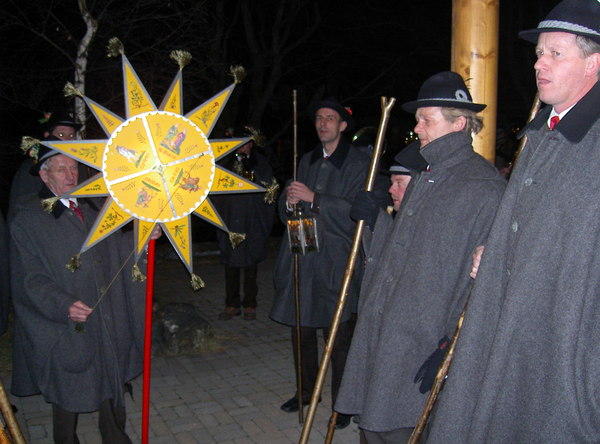Carolling in Heiligenblut
Performing arts in Carinthia, inscribed 2010
Every year in the Carinthian community of Heiligenblut am Großglockner, in the night between 5 and 6 January, carollers ("Sternsinger" – lit. “star singers”) go from house to house bringing blessings to the inhabitants. Each carolling group (referred to as a "Rotte") consists of one star-bearer ("Sternträger"), five instrumentalists, and nine singers—all men aged 16 and older. Heiligenblut’s tradition of carolling, which probably dates back to the 16th century, has been preserved largely in its original form right up to the present.
On the afternoon of 5 January, the individual carolling groups receive a blessing (Aussegnung) at St. Vincent’s parish church. Thereafter, the altogether nine Sternsingerrotten visit all of the community’s homes—a process that lasts into the wee hours of the morning. Elements such as the “Star Song” (Sternlied) and house blessings in which the benediction Christus Mansionem Benedicat (CMB) is inscribed above the door remain fixed elements of this tradition today.
The Heiligenblut carollers embody an immanent component of the community of Heiligenblut’s cultural heritage: the populace identifies strongly with this tradition, with all local employers giving their employees time off to participate in carolling.
Even if it would appear that Heiligenblut’s carolling tradition has gone for centuries with virtually no notable changes, there do exist initiatives to adapt this tradition to present-day needs. These include enabling the tourism industry to benefit from the carolling activities, with numerous guests visiting Heiligenblut on these days in order to experience this tradition.
Downloads
- Application form (in German only) 29 KB (doc)
- Expertise Schachner und Heinz (in German only) 2 MB (pdf)


![[Translate to EN:] © J. Ségur/ZED, with the permission of UNESCO](/fileadmin/_processed_/d/b/csm_Convention-2003-IKE_0832a6a47d.jpg)
![[Translate to EN:] © ÖUK](/fileadmin/_processed_/3/9/csm_P1011318_7eac86402f.jpg)

![[Translate to EN:] © Weitblickfilm](/fileadmin/_processed_/9/8/csm_Workshop_17_2dee1e1fd8.jpg)